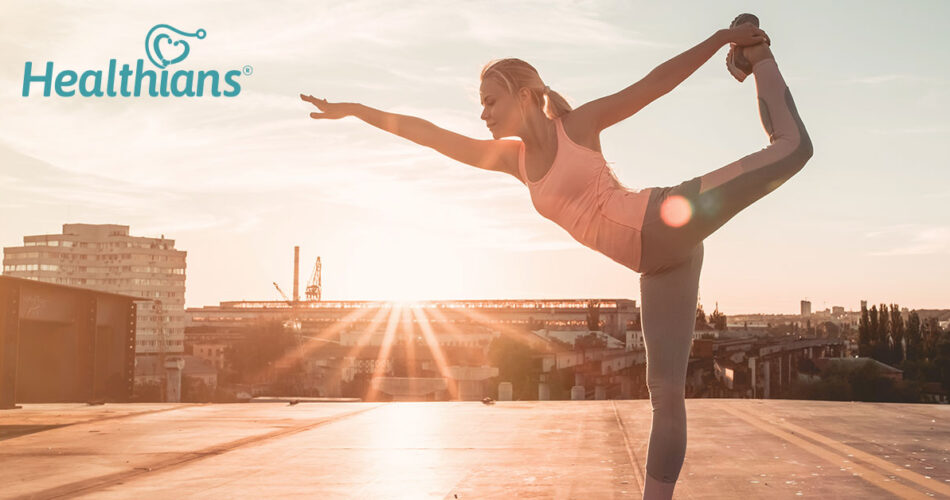Introduction
As a runner, one of the most common injuries that you may experience is the runner’s knee. This condition, also known as patellofemoral pain syndrome, affects the patellofemoral joint, which is the joint between the kneecap and the thigh bone. It can cause pain, discomfort, stiffness, and swelling around the knee, making it difficult to run or even perform daily activities.
Fortunately, there are several restorative yoga asanas that can help alleviate the symptoms of a runner’s knee and even prevent the condition from occurring in the first place. In this blog post, we will explore five spectacular restorative yoga postures that can help you manage a runner’s knee.
Five spectacular restorative yoga postures
1. Virasana (Hero Pose)
Virasana, also known as hero pose, is a great seated posture for runner’s knee. This pose gently stretches the thighs, knees, and ankles, helping to relieve tension in the knees and improve flexibility in the quadriceps muscles. This pose can be especially helpful after a long run, as it helps to release tension in the knees and lower legs.
To perform this pose, follow these steps:
• Start by kneeling on the floor with your knees together and your feet slightly apart.
• Gently separate your feet and sit back on your heels, placing your hands on your thighs.
• If this feels uncomfortable, you can place a folded blanket or cushion between your calves and thighs to provide extra support.
• You should feel a slight stretch in the quadriceps and the front of your knees.
• Hold this pose for 1-2 minutes, or as long as is comfortable.
• As you hold this pose, focus on your breath and allow your body to relax.
2. Balasana (Child’s Pose)
Balasana, also known as child’s pose, is a gentle asana that can help alleviate knee pain and discomfort. This pose stretches the hips, thighs, and ankles, and can help release tension in the back, hips, and thighs, making it an ideal pose for runners with tight muscles.
To perform this pose, follow these steps:
• Start in a kneeling position with your knees together and your toes touching.
• Slowly lower your buttocks towards your heels, stretching your arms forward.
• Rest your forehead on the floor and relax your body.
• You should feel a gentle stretch in between your hips and thighs.
• Hold this pose for 1-2 minutes, breathing deeply and then release and come out of the pose slowly.
3.Supta Padangusthasana (Reclining Hand-to-Big-Toe Pose)
Supta Padangusthasana, also known as Reclining Hand-to-Big-Toe Pose, is an excellent restorative yoga asana for runners with tight hamstrings and calf muscles. Tightness in these areas can cause strain on the knee joint, leading to runner’s knee. This pose gently helps to stretch and lengthen these muscles, reducing the risk of injury.
To perform this pose, follow these steps:
• Lie on your back with your legs extended.
• Bend your right knee and bring it towards your chest.
• Wrap a strap or towel around the ball of your right foot.
• Slowly straighten your right leg, holding onto the strap or towel.
• Keep your left leg extended on the mat.
• Repeat on the other side.
• Hold this pose for 1-2 minutes, breathing deeply and then release and come out of the pose slowly.
4. Setu Bandhasana (Bridge Pose)
Setu Bandhasana, also known as bridge pose, is a gentle backbend posture that can help strengthen the glutes, hamstrings, and lower back muscles. This pose gently stretches the chest, neck, and spine, and can help release tension in the lower back. This pose can be beneficial for runners with weak glutes, as weak glutes can lead to imbalances in the hips and knees, increasing the risk of injury.
To perform this pose, follow these steps:
Lie on your back with your knees bent and your feet hip-width apart, close to your buttocks.
• Place your arms by your sides with your palms facing down.
• Inhale and lift your hips off the floor, pressing down through your feet
• Roll your shoulders back and interlace your fingers under your back, pressing your forearms down into the mat.
• Lift your chest towards your chin and tuck your chin towards your chest, lengthening your neck.
• Hold the pose for 30 seconds to a minute, breathing deeply and then release and come out of the pose slowly.
5. Supta Baddha Konasana or Reclining Bound Angle Pose
Supta Baddha Konasana or Reclining Bound Angle Pose is a restorative asana that can help open the hips and release tension in the groin and inner thighs.
To perform this pose, follow these steps:
• Start by sitting on the floor with your legs extended in front of you.
• Bring the soles of your feet together and allow your knees to fall out to the sides, creating a diamond shape with your legs.
• Hold this pose for a few minutes, then release and come out of the pose slowly.
Final thoughts
Incorporating these five restorative yoga postures into your daily routine can help you manage the symptoms of runner’s knee and prevent future injuries. Remember to listen to your body and never push yourself beyond your limits, as this can cause further damage to your knees. With regular practice and patience, you can improve your flexibility, strength, and overall well-being.
Happy running and happy yoga with happy yoga postures!




